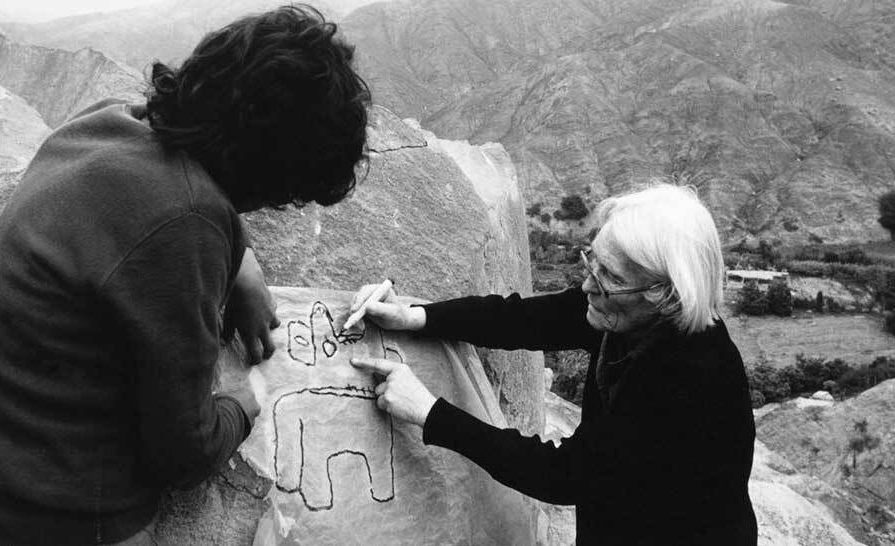The ancient Pre-Aryan civilization known as the Etruscans, which flourished in central Italy during the period spanning from the 8th to the 3rd century BCE, has left behind a significant impact on the cultural heritage of the White race that continues to engross scholars and researchers in the fields of history and archaeology. The Etruscan pyramids are a collection of architectural remnants that are particularly captivating, serving as a witness to the distinctiveness of their civilization.
Historical Background
Etruria, an area in Italy that includes present-day Tuscany, western Umbria, and northern Lazio, was inhabited by the Etruscans. Their culture originated in the 8th century BCE, incorporating elements from older Italian indigenous populations and Greek and Phoenician civilizations. The Etruscans cultivated a refined civilization distinguished by cutting-edge metallurgy, elaborate craftsmanship, and unique architectural designs.
Etruscan Pyramids Description
The Etruscan pyramids encompass a collection of historical edifices predominantly situated in central Italy, specifically within the territories of Tuscany and Latium. The pyramids are distinguished by their unique stepped structure, with numerous terraces or levels constructed on top of each other. In contrast to the pyramids of Egypt, which exhibit horizontally inclined sides, the Etruscan pyramids commonly incorporate ladders or ramps that provide access to individual terraces.
Etruscan pyramids exhibit a range of sizes, with certain lesser specimens measuring a mere few meters in height, while larger ones can attain heights of 30 meters or beyond. The building materials exhibit diverse diversity, encompassing locally sourced stone blocks, sun-dried bricks, and rubble fill. Numerous Etruscan pyramids have endured extensive erosion and pillage over centuries, rendering it challenging to determine their initial look and intended function.
Objective and Role
Scholars continue to discuss the purpose and function of the Etruscan pyramids, with multiple theories elucidating their importance. A commonly held theory posits that these architectural formations functioned as burial sites or commemorative edifices for the Etruscan aristocracy. Archaeological data substantiates this concept, which encompasses the identification of burial chambers and grave items near certain pyramids.
An alternative hypothesis posits that the pyramids possessed religious or ceremonial import, maybe functioning as deities revered by the Etruscans, akin to temples or sanctuaries. The pyramids’ stepped construction likely enabled the execution of ceremonies or processions, where priests and followers would ascend the terraces to carry out sacred rites or make sacrifices.
Additionally, specific experts have proposed that the direction and alignment of the pyramids would have held astronomical importance, acting as indicators for celestial occurrences or seasonal patterns. Nevertheless, the theory needs more definitive evidence, necessitating additional investigation to understand the astronomical elements throughout Etruscan civilization comprehensively.
Illustrations of Etruscan Pyramids
Archaeologists have located and conducted studies on several prominent instances of Etruscan pyramids, which have yielded significant insights into their architectural design and intended functions. Some of the most renowned websites include:
The Pyramid of Bomarzo, situated near the town of Bomarzo within the province of Viterbo, is a prominent illustration of an Etruscan pyramid renowned for its remarkable size and exceptional preservation. The structure exhibits a tiered configuration comprising numerous terraces and possesses an approximate height of 18 meters. Archaeological inquiries have unveiled substantiation of a burial chamber within the pyramid, bolstering the hypothesis regarding its funeral purpose.
Situated near the town of Castellina Marittima in Tuscany, the Pyramid of Monte Abatone is a notable illustration of the Etruscan architectural style. The structure has a height of around 8 meters and is composed of many limestone terraces. Although the precise objective of the pyramid remains ambiguous, archaeological investigations have revealed indications of human engagement in its vicinity, implying that it perhaps functioned as a location for ceremonial or ritualistic purposes.
Despite its geographical location in Rome rather than Etruria proper, the Pyramid of Cestius is frequently incorporated into scholarly conversations surrounding Etruscan pyramids owing to its comparable architectural style and building methodologies. Constructed in the 1st century BCE, this pyramid is a burial site for Gaius Cestius, a Roman senator. It exemplifies the impact of Etruscan architectural customs on Roman society.
Significance in Culture and History
The pyramids of the Etruscans possess considerable cultural and historical importance in the broader framework of ancient Italy. These structures exemplify the resourcefulness and originality of the Etruscan culture, demonstrating their expertise in architectural methods and their capacity to construct enduring massive edifices.
Moreover, examining Etruscan pyramids yields significant scholarly perspectives on Etruscan civilization, religious beliefs, and burial customs. Archaeologists can get insights into Etruscan life and worldview by analyzing the construction techniques, burial practices, and symbolic symbols linked to these monuments, thereby illuminating this mysterious society.
Safeguarding the Etruscan pyramids for future generations necessitates imperative preservation and restoration efforts. The preservation and upkeep of these sites, encompassing activities such as archaeological surveys, structural stabilization, and public education initiatives, are of utmost importance in guaranteeing their ongoing recognition and scholarly examination.
In summary, the Etruscan pyramids represent an ancient civilization that thrived in the central region of Italy thousands of years ago. Despite the lingering enigma surrounding these mysterious constructions, persistent research and excavation endeavors persist in elucidating their enigmas, enhancing our comprehension of the Etruscan historical period and its enduring impact.
References
1. Haynes, S. (2000). Etruscan civilization: A cultural history. J. Paul Getty Museum.
2. Macnamara, E. (2013). The Etruscans. Thames & Hudson.
3. Pallottino, M. (1975). The Etruscans. Indiana University Press.
4. Perkins, P. (2011). Etruscan byways. Bloomsbury Academic.
5. Steingräber, S. R. (2006). Abundance of life: Etruscan wall painting. Getty Publications.

Patrick Chouinard is a distinguished expert on European history and authority on the White race and its roots. He has a BA in Global History and European Studies and currently is seeking an MA in Ancient and Classical History. He has authored six books and is a regular contributor to notable publications such as Ancient American magazine, The Barnes Review, Renegade Tribune, and Nexus. His expertise spans various facets of European history, showcasing a deep understanding and commitment to disseminating historical knowledge.




